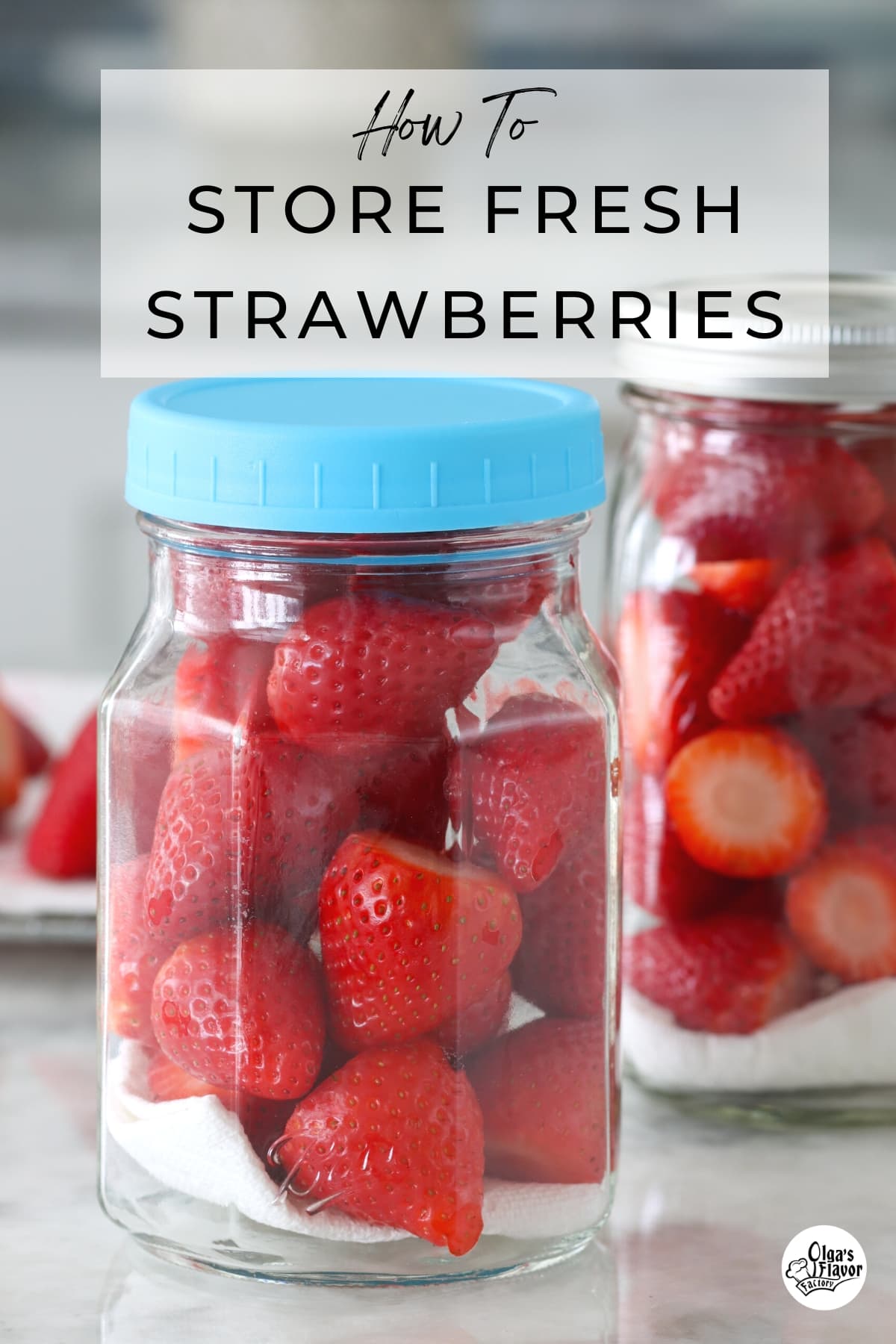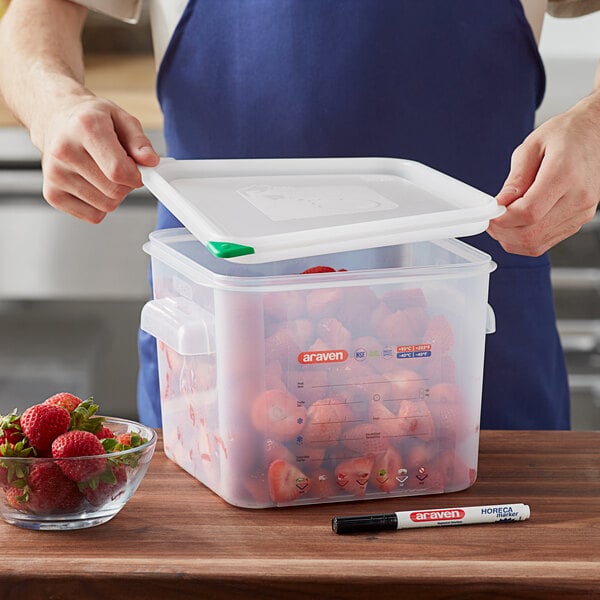
Are you tired of your strawberries going bad too quickly? You buy fresh, juicy berries, but they spoil before you get a chance to enjoy them all.
The secret to keeping your strawberries fresh longer lies in one simple tool: an airtight container. Using the right container can lock in freshness, keep mold away, and save you money by reducing waste. You’ll discover how an airtight container can transform the way you store strawberries and ensure every bite stays delicious.
Keep reading to find out what makes these containers a must-have for your kitchen.

Why Airtight Matters
Storing strawberries properly keeps them fresh longer. Airtight containers create the perfect environment for strawberries. They stop air from reaching the fruit. This simple step matters a lot for preserving taste and texture.
How Air Affects Strawberries
Air causes strawberries to dry out quickly. It also speeds up mold growth on the fruit. Oxygen reacts with the fruit’s surface and breaks it down. This leads to soft spots and bad smells. Exposure to air reduces the strawberry’s shelf life.
Benefits Of Airtight Storage
Airtight containers trap moisture and block oxygen. This slows down spoilage and keeps strawberries juicy. They prevent the fruit from absorbing other food smells. The result is fresh, sweet strawberries for days. Airtight storage also reduces waste by keeping berries edible longer.

Choosing The Right Container
Choosing the right airtight container for strawberries helps keep them fresh longer. The container must protect berries from moisture and air. Picking the best one depends on a few key factors. These include the container’s material, size, and seal quality. Each factor affects how well the strawberries stay fresh and tasty.
Material Options
Containers come in plastic, glass, and silicone. Plastic containers are light and affordable. Glass containers do not absorb smells or stains. Silicone containers are flexible and easy to clean. Choose a material that fits your needs for storage and cleaning.
Size And Shape Considerations
Pick a container that fits the amount of strawberries you have. Too much space lets air dry the berries. Too small a container can crush them. Containers with a wide opening make it easy to add and remove berries. A shallow container helps avoid squishing the fruit.
Seal Quality
Airtight seals keep air and moisture out. Look for containers with rubber or silicone gaskets. These seals prevent leaks and keep strawberries fresh. Test the container by closing it and checking for tightness. A good seal keeps your berries crisp longer.
Preparing Strawberries For Storage
Preparing strawberries for storage helps keep them fresh longer. Proper steps reduce spoilage and maintain taste. Clean, dry, and sort strawberries before storing them in an airtight container. These steps protect berries from moisture and mold.
Washing Tips
Wash strawberries gently under cold water. Use a colander to avoid crushing the fruit. Do not soak berries. Rinse quickly to remove dirt and pesticides. Wash just before storage, not before picking.
Drying Techniques
Dry strawberries carefully with a clean towel or paper towel. Pat each berry gently to remove water. Spread berries on a dry cloth to air dry. Avoid moisture buildup inside the container.
Sorting And Inspecting
Sort strawberries by size and ripeness. Remove bruised or damaged berries. Check for mold and discard affected fruit. Store only fresh, firm strawberries to prevent spoilage.

Storing Strawberries Properly
Storing strawberries properly keeps them fresh and tasty longer. Strawberries are delicate and need the right care. Using an airtight container helps protect them from air and moisture. This section explains how to store strawberries for the best results.
Optimal Temperature
Strawberries last longest at a cool temperature. Keep them in the fridge at about 32 to 36 degrees Fahrenheit. This slows down spoilage and keeps berries firm. Avoid freezing strawberries unless you plan to use them later for smoothies or baking.
Placement In Fridge
Store strawberries in the main part of the fridge. The door is too warm and causes faster spoilage. Place the airtight container on a middle shelf for steady cold air. Keep strawberries away from strong-smelling foods to avoid odor absorption.
Avoiding Moisture Build-up
Moisture causes strawberries to mold quickly. Use a dry paper towel inside the airtight container to absorb moisture. Do not wash strawberries before storing; wash them right before eating. Check berries daily and remove any that are soft or moldy.
Extending Freshness Beyond Storage
Keeping strawberries fresh goes beyond just storing them. Proper care extends their life and taste. Using airtight containers helps, but other steps matter too. These methods keep strawberries tasty and safe longer.
Fresh strawberries can spoil fast. It is best to slow down this process. Using airtight containers reduces air exposure, but more can be done.
Freezing In Airtight Containers
Freezing is a simple way to keep strawberries fresh for months. Place cleaned and dried berries in airtight containers. This stops freezer burn and keeps flavor. Frozen strawberries stay good for smoothies or desserts.
Using Preservative Methods
Natural preservatives like lemon juice help keep strawberries fresh. Lightly coating berries slows browning and mold. Vinegar washes also reduce bacteria. These methods work well with airtight storage.
Regular Quality Checks
Check stored strawberries often. Remove any soft or moldy berries immediately. This prevents spoilage from spreading. Keeping containers clean also helps freshness last longer.
Common Mistakes To Avoid
Storing strawberries in airtight containers helps keep them fresh longer. Avoid common mistakes that spoil the berries quickly. Small errors can reduce their shelf life and taste.
Overcrowding Containers
Do not cram too many strawberries into one container. Overcrowding causes bruising and faster spoilage. Leave some space for air to circulate inside the container. Handle berries gently to keep them intact.
Storing Wet Berries
Always dry strawberries before storing. Moisture makes mold grow faster. Use paper towels to remove extra water. Wet berries do not stay fresh in airtight containers.
Ignoring Container Seal
Check the container’s seal before storing strawberries. A poor seal lets air inside, causing berries to spoil. Make sure the lid fits tightly and securely. Proper sealing keeps strawberries fresh longer.
Frequently Asked Questions
What Makes An Airtight Container Ideal For Strawberries?
An airtight container prevents air exposure, reducing moisture loss and mold growth. It keeps strawberries fresh longer and preserves their flavor and texture.
How Long Do Strawberries Last In An Airtight Container?
Stored properly, strawberries can last up to 7-10 days in an airtight container. This extends their freshness compared to regular storage methods.
Can Airtight Containers Prevent Strawberry Mold?
Yes, airtight containers limit air and moisture exposure, which slows mold growth. Proper storage helps maintain the berries’ quality and safety for consumption.
Are Plastic Or Glass Airtight Containers Better For Strawberries?
Both work well, but glass containers are non-reactive and easier to clean. Plastic containers are lightweight and portable, making them convenient for on-the-go use.
Conclusion
Keeping strawberries fresh is easier with an airtight container. It stops air and moisture from spoiling the fruit. You save money by reducing waste. Strawberries stay juicy and tasty for days longer. Choose containers that seal well and fit your needs.
Proper storage means you enjoy strawberries at their best. Try it and see the difference in freshness. Simple steps make a big difference in fruit storage. Your strawberries will thank you.





